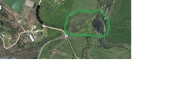jared fink wrote:
Could you explain how to plan and build such a thing? According to our soil report, the area in question is no good for ponds...I dont see how thats possible with all the standing water. Would it be a good idea to dig in and around the creek, so that the creek provides a means to keep the water fresh?
I personally wouldn't touch this area with pasture animals.
As was mentioned, digging in the creek could cause you a lot of problems with your downstream neighbors if not your governing bodies.
A swale is a pond, but it does not necessarily hold water but lets it infiltrate into the subsoil and / or feed plants planted in the downhill berm, in the swale itself, or downslope. If what you say is true of your soil report, then you may have trouble ponding upslope without a liner. You could deliver muckier material to the pond bottom to make it water tight. Also with the soil type you describe, it is likely that your wet area is indeed a saturated water table at surface level, or that because of it's low location and the bend in the creek that the increased organic content there has caused it to hold more water. Could be that since it's the low area and a bend that it's a silt trap where the rest of your property is sandy: all creeks are flows of not just water but of nutrients and aggregates. Hard to say without digging a bit with a spade and watching things over a couple years.
A catchment pond or swale (with down slope hugulkultur or swale mound) above your wet site without a liner may not help this situation, as it may just serve to charge your water table at the wet site. What you plant makes a difference, if it can draw up a large volume of water and transpire (plant talk for breathing out) the moisture into the air. Willows and cattails, for instance, will draw up and throw water into the air, as do lushly vegetative plants like comfrey. If you really must get the water away from this area, what you might want to consider is creating an upslope, slightly off contour ditch/swale, and draining the upslope flow away from this wetland area, and possibly into a pond who's overflow goes into the creek downstream.
But, I would not hazard to direct you to do that, or anything without looking at the site over time and sussing out why it is that you feel it's necessary to use this particular area for pasture. You may be able to manage your animals more effectively on the existing pasture (short rotations through small paddocks ) and leave this area, and the entire creek, out of the animal zones.
I've done some repeating of others here. There's probably enough good advice on these responses already without my one two cents. But there you have it !






![Filename: property1.jpg
Description: [Thumbnail for property1.jpg]](/t/33317/a/15082/property1.jpg)
 1
1





 1
1























 1
1

























